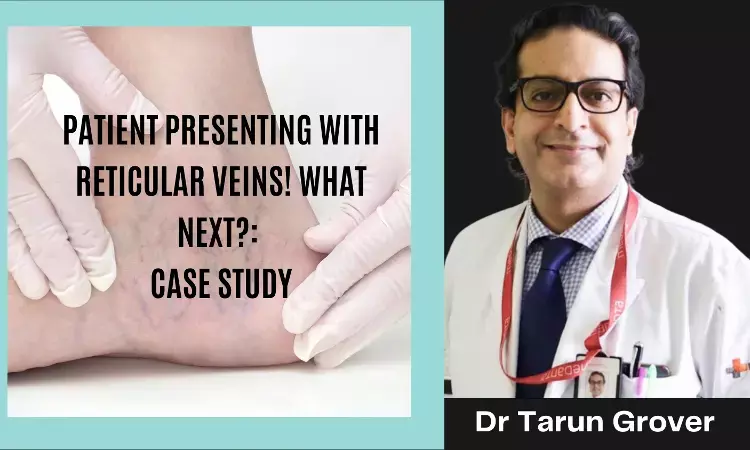- Home
- Medical news & Guidelines
- Anesthesiology
- Cardiology and CTVS
- Critical Care
- Dentistry
- Dermatology
- Diabetes and Endocrinology
- ENT
- Gastroenterology
- Medicine
- Nephrology
- Neurology
- Obstretics-Gynaecology
- Oncology
- Ophthalmology
- Orthopaedics
- Pediatrics-Neonatology
- Psychiatry
- Pulmonology
- Radiology
- Surgery
- Urology
- Laboratory Medicine
- Diet
- Nursing
- Paramedical
- Physiotherapy
- Health news
- Fact Check
- Bone Health Fact Check
- Brain Health Fact Check
- Cancer Related Fact Check
- Child Care Fact Check
- Dental and oral health fact check
- Diabetes and metabolic health fact check
- Diet and Nutrition Fact Check
- Eye and ENT Care Fact Check
- Fitness fact check
- Gut health fact check
- Heart health fact check
- Kidney health fact check
- Medical education fact check
- Men's health fact check
- Respiratory fact check
- Skin and hair care fact check
- Vaccine and Immunization fact check
- Women's health fact check
- AYUSH
- State News
- Andaman and Nicobar Islands
- Andhra Pradesh
- Arunachal Pradesh
- Assam
- Bihar
- Chandigarh
- Chattisgarh
- Dadra and Nagar Haveli
- Daman and Diu
- Delhi
- Goa
- Gujarat
- Haryana
- Himachal Pradesh
- Jammu & Kashmir
- Jharkhand
- Karnataka
- Kerala
- Ladakh
- Lakshadweep
- Madhya Pradesh
- Maharashtra
- Manipur
- Meghalaya
- Mizoram
- Nagaland
- Odisha
- Puducherry
- Punjab
- Rajasthan
- Sikkim
- Tamil Nadu
- Telangana
- Tripura
- Uttar Pradesh
- Uttrakhand
- West Bengal
- Medical Education
- Industry
A Patient presented with Reticular Veins. What's next?

Case capsule:
Brief history:
A 28-year-old lady, Ms. R, presented to the surgery OPD with superficial bluish thread-like appearances in the lateral part of her left leg for the past 1 year. It was associated with occasional mild aches and she had mainly cosmetic concerns with this appearance. She was apprehensive about the condition and wanted to get rid of it. She is without any other significant medical history or comorbidities.
How to evaluate this patient further?
Physical examination
The patient was examined in a standing posture. Bluish-purple dilated superficial veins of small calibre, just beneath the skin, more like a thread noted behind the knee joint in the popliteal fossa of left leg spreading to thigh and calf regions. The opposite limb was normal in appearance.
Fig.1
Duplex sonography of bilateral lower limbs for screening purposes was done and revealed below-knee perforator incompetence with intact SFJ and normal deep venous system.
Diagnosis of this patient: left lower limb reticular veins
How to proceed further?
The treatment of choice for reticular veins demanding treatment (symptomatic/ having underlying venous dysfunction) is injection sclerotherapy.
Injection sclerotherapy:
Sclerotherapy agents cause endothelial damage by their actions as either osmotic or detergent agents. The most common sclerotherapy agents used in the treatment of lower extremity chronic venous disease are polidocanol, sodium tetradecyl sulfate, hypertonic saline, and glycerin. Venous sclerotherapy agents can be formulated as a liquid or foam. Liquid sclerotherapy can also be used to treat residual or recurrent veins following endovenous ablation or surgery, and perforator veins. foam sclerotherapy is predominantly applied to the treatment of reflux of the superficial axial veins (great, small, accessory saphenous) and reflux of perforator veins.
Technique of injection sclerotherapy:
The syringe is attached to a 27- or 30-gauge needle, which is angled to assist its introduction into the vessel. The foam is made with a 3-way cannula with the Tessari technique. The patient is placed in Trendelenburg position during injection to empty the vein of blood, which increases the contact time between the vein wall and the sclerosant. Following the application of alcohol to clean the area, the needle is introduced into the vein and with loss of resistance, which identifies the intraluminal needle placement, the sclerosant is then injected (Fig.2)
Fig 2
Alternate treatment options:
This includes laser and light therapies like pulsed dye laser, diode laser, Nd: YAG laser, and intense pulse light sources. Laser therapy of venous structures is based on the concept of selective photo thermolysis. Pulsed lasers and light sources heat the target tissue, inducing thermal injury with limited damage to the surrounding structures. The selected duration of the light pulse determines the size of the vessel that will respond to treatment. Shorter pulses selectively heat smaller vessels (<2 mm), and longer pulse duration light sources are effective for slightly larger vessels. Candidates for laser and light therapy are those who do not tolerate or fail sclerotherapy or who have small superficial vessels that are too small to cannulate with a sclerotherapy needle.
This patient was treated with injection sclerotherapy and then made to wear compression bandages post-procedure which resulted in the disappearance of reticular veins. The patient was also advised to refrain from intense leg exercises in the immediate post-operative period.
Dr Tarun Grover is a DNB(Gen Surg),FNBE(Vascular Surg),MNAMS. Dr Tarun Grover has experience as a Vascular & endovascular specialist for over 20 years. Currently, he is the Director in Division Of Vascular & Endovascular Surgery , Medanta-The Medicity Gurgaon, India.
Dr Kamal Kant Kohli-MBBS, DTCD- a chest specialist with more than 30 years of practice and a flair for writing clinical articles, Dr Kamal Kant Kohli joined Medical Dialogues as a Chief Editor of Medical News. Besides writing articles, as an editor, he proofreads and verifies all the medical content published on Medical Dialogues including those coming from journals, studies,medical conferences,guidelines etc. Email: drkohli@medicaldialogues.in. Contact no. 011-43720751


